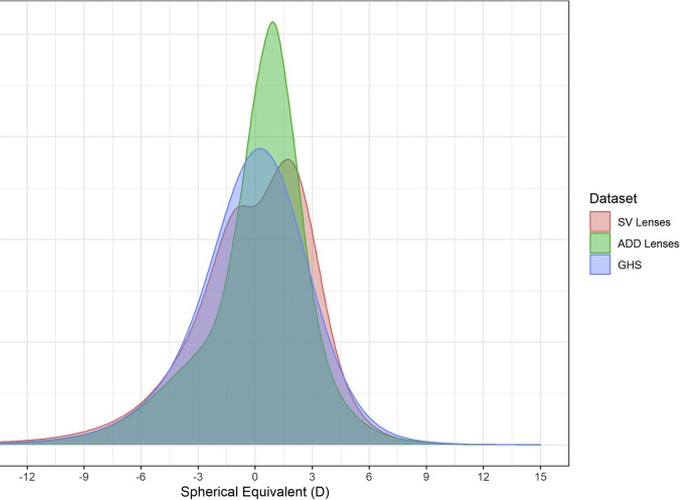The refractive error and vision impairment estimation with spectacle data study

The refractive error and vision impairment estimation with spectacle data study
Abstract
Purpose: To investigate whether spectacle lens sales data can be used to estimate the population distribution of refractive error among patients with ametropia and hence to estimate the current and future risk of vision impairment. Design: Cross-sectional study. Participants: A total of 141,547,436 spectacle lens sales records from an international European lens manufacturer between 1998 and 2016. Methods: Anonymized patient spectacle lens sales data, including refractive error information, was provided by a major European spectacle lens manufacturer. Data from the Gutenberg Health Survey was digitized to allow comparison of a representative, population-based sample with the spectacle lens sales data. A bootstrap analysis was completed to assess the comparability of both datasets. The expected level of vision impairment resulting from myopia at 75 years of age was calculated for both datasets using a previously published risk estimation equation combined with a saturation function. Main Outcome Measures: Comparability of spectacle lens sales data on refractive error with typical population surveys of refractive error and its potential usefulness to predict vision impairment resulting from refractive error. Results: Equivalent estimates of the population distribution of spherical equivalent refraction can be provided from spectacle lens data within limits. For myopia, the population distribution was equivalent to the Gutenberg Health Survey (≤ 5% deviation) for levels of –2.0 diopters (D) or less, whereas for hyperopia, the distribution was equivalent (≤ 5% deviation) for levels of +3.0 D or more. The estimated rates of vision impairment resulting from myopia were not statistically significantly different (chi-square, 182; degrees of freedom, 169; P = 0.234) between the spectacle lens dataset and Gutenberg Health Survey dataset. Conclusions: The distribution of refractive error and hence the risk of vision impairment resulting from refractive error within a population can be determined using spectacle lens sales data. Pooling this type of data from multiple industry sources could provide a cost-effective, timely, and globally representative mechanism for monitoring the evolving epidemiologic features of refractive error and associated vision impairment.